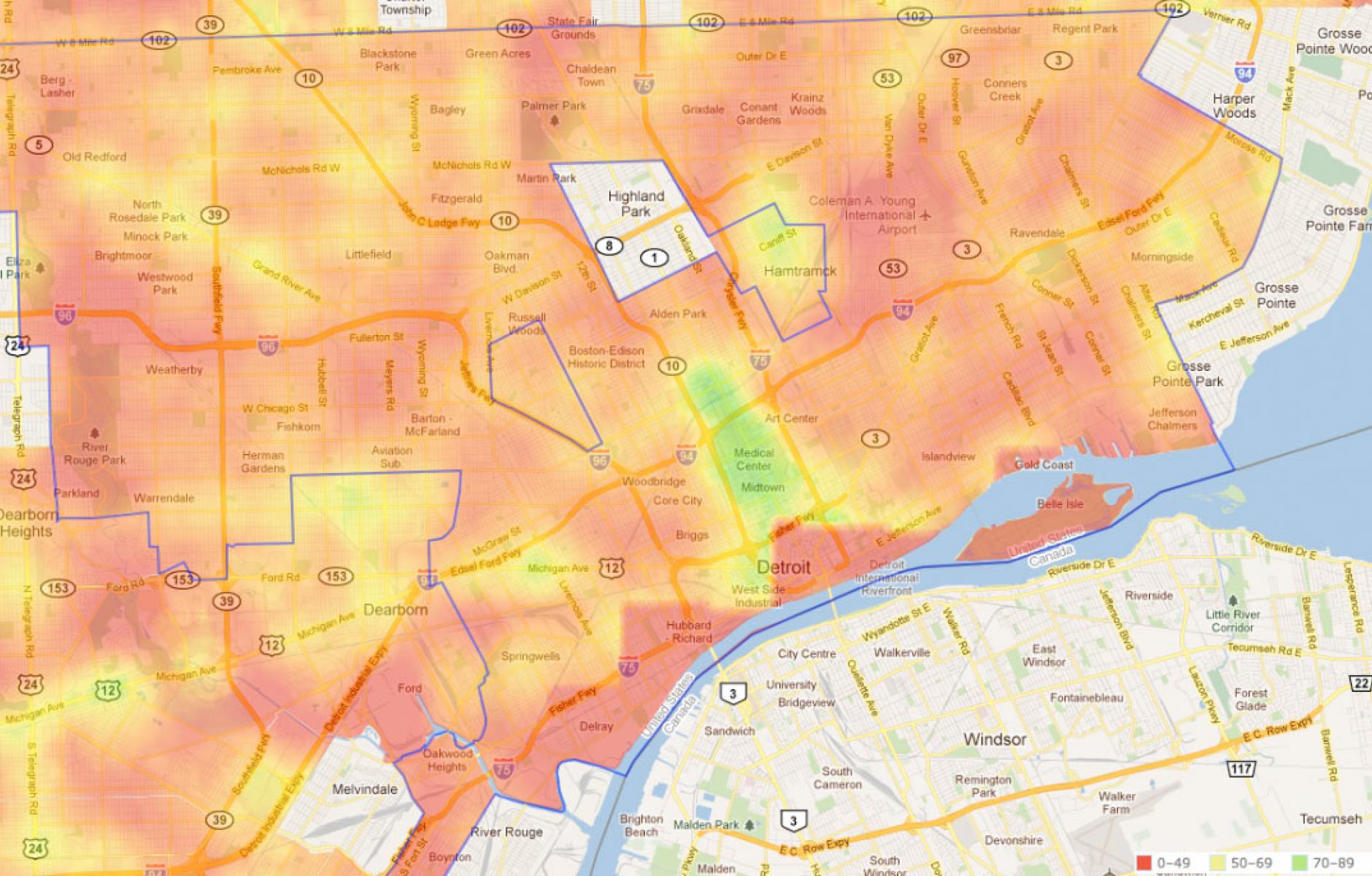
Reforming the low-income housing tax credit scoring system
Note: This document is one of a series of tools created for Build a Better Burb, the Hub for Great Suburban Design. The Build a Better Burb website has been recently updated by CNU.
The Problem
Affordable housing is built in the suburbs in automobile-dependent places, forcing low-income and working-class residents to spend too much on transportation.
Discussion
The Low-Income Housing Tax Credits (LIHTC) program accounts approximately 90 percent of all subsidized affordable rental housing created in the United States today (A Tax Credit Worth Preserving. The New York Times, December 20, 2012). The program is administered by states, but for-profit and nonprofit developers build projects locally with the approval of municipalities. Developers who are awarded the credits sell them at discounted rates to investors, who can apply these tax credits to any part of their federal tax bill.
LIHTC has been effective in promoting affordable housing, but it would be more effective if it encouraged “location efficiency,” the quality of place that makes walking, biking, and transit easy.
Combined housing and transportation costs tend to be lower in location-efficient neighborhoods in suburbs and cities, big and small, according to HUD: www.locationaffordability.info
The suburbs have a growing share of poor and working class families. If those families live in motor-vehicle-dependent places, the households will be burdened with high transportation costs. A Better Burb would prevent the squandering of affordable housing subsidies on higher automobile costs.
A Solution
Beginning in 2012, Michigan began using Walk Score and other place-based criteria in its scoring of LIHTC.
Place-based criteria take location efficiency into account. Out of 221 possible points in Michigan, place-based criteria account for 65, or about 30 percent of the total. That’s the biggest single category, and the Michigan State Housing Development Authority (MSHDA), which administers the program, puts place-based criteria at the top of the list for emphasis.
Walk Score (walkscore.com), a website that gives a score of 0 to 100 for walkability for any address nationwide, accounts for 20 of those points.
Developers earn points based on a sliding scale. A Walk Score of 90 or above, for example, earns the full 20 points decreasing in increments down to zero with a Walk Score below 20. Walk Score is a “dashboard of urbanism” that is correlated to good urban form, says James Tischler, director of MSHDA’s Community Development Division. The experience of using Walk Scores as criteria for tax credits has been positive, says Andy Martin, LIHTC analyst with MSHDA. Location in a central city or historic downtown earns 10 points. MSHDA has developed specific measures for this, such as the number of buildings nearby in continuous commercial operation for 50 years, or have zero setback from streets.
Location in an officially designated revitalization area earns 10 points. Historic rehabilitation earns 5 points. Proximity to alternative transportation earns 5 points. Economic integration—the presence of 20 percent market-rate units in a project—also earns 5 points. Ten points are awarded for meeting green building standards. MSHDA allows use of three green standards, including LEED. In addition to the place-based criteria, a developer can earn 5 points for providing a shared community space.
Overall, Michigan’s LIHTC criteria emphasize many important factors, including municipal support (e.g. has the plan been approved, does it quality for a tax abatement), the qualifications of the developer, the degree to which the project is helping very low-income people, the length of the affordability commitment, nonprofit ownership, barrier-free design, and more. The strong emphasis on place-based criteria gives location-efficient projects a significant advantage.
A reformed LIHTC would create an opportunity for municipalities to build more affordable housing in walkable places near transit. Michigan’s program offers a nationwide model for how to integrate place-based criteria into the LIHTC program and steer affordable housing toward mixed-use centers, nodes, and corridors.
Download this tool here.
Find the other tools here.




